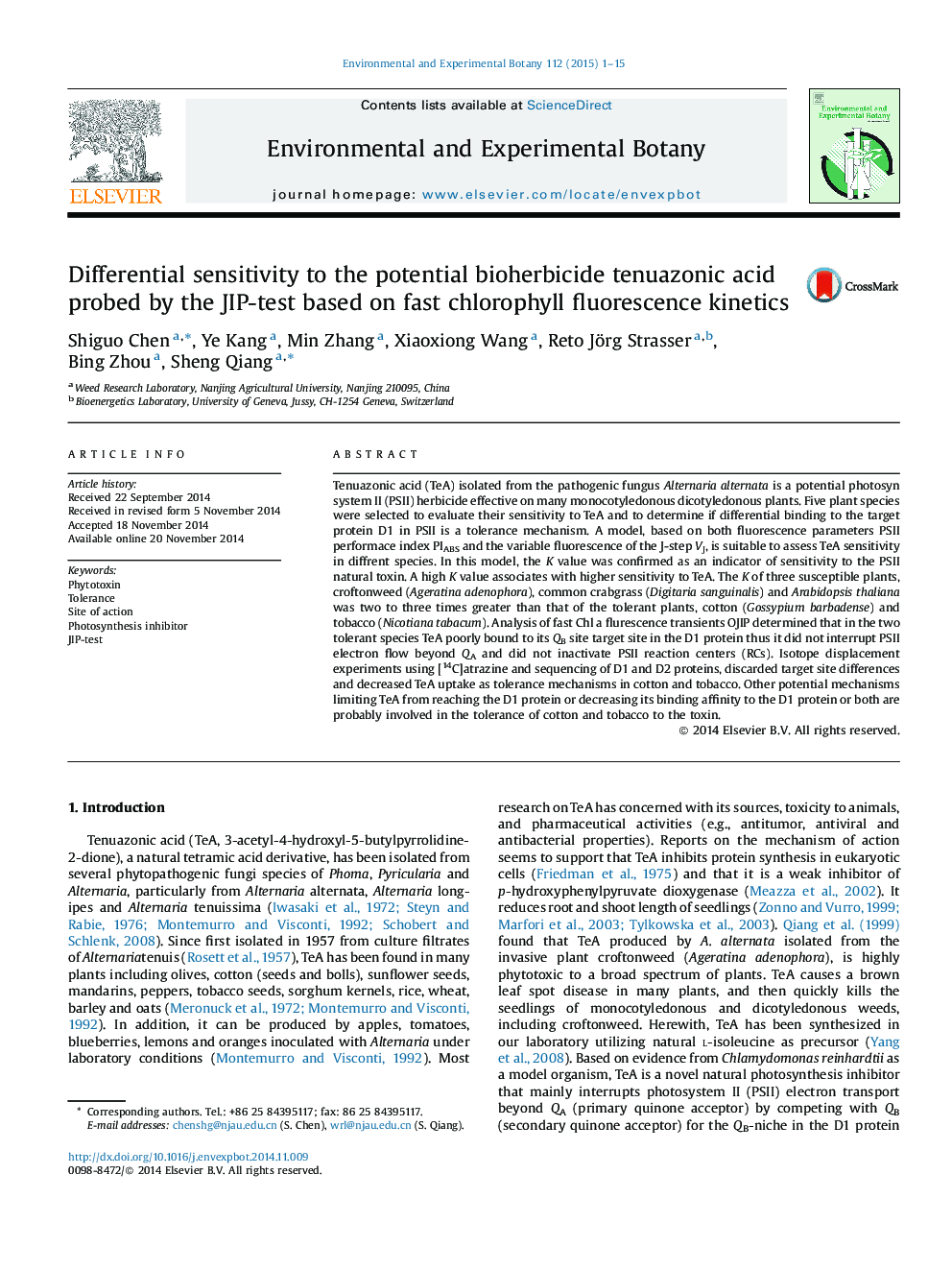| کد مقاله | کد نشریه | سال انتشار | مقاله انگلیسی | نسخه تمام متن |
|---|---|---|---|---|
| 4554251 | 1628065 | 2015 | 15 صفحه PDF | دانلود رایگان |

• A model based on the JIP-test was built to estimate plant sensitivity to the toxin TeA.
• K was confirmed as a reliable indicator of TeA sensitivity.
• TeA has a low binding affinity to D1 protein of cotton and tobacco.
• Chloroplastic genes psbA and psbD of common crabgrass were cloned.
• Tolerance of cotton and tobacco to TeA is attributed to multiple mechanisms.
Tenuazonic acid (TeA) isolated from the pathogenic fungus Alternaria alternata is a potential photosyn system II (PSII) herbicide effective on many monocotyledonous dicotyledonous plants. Five plant species were selected to evaluate their sensitivity to TeA and to determine if differential binding to the target protein D1 in PSII is a tolerance mechanism. A model, based on both fluorescence parameters PSII performace index PIABS and the variable fluorescence of the J-step VJ, is suitable to assess TeA sensitivity in diffrent species. In this model, the K value was confirmed as an indicator of sensitivity to the PSII natural toxin. A high K value associates with higher sensitivity to TeA. The K of three susceptible plants, croftonweed (Ageratina adenophora), common crabgrass (Digitaria sanguinalis) and Arabidopsis thaliana was two to three times greater than that of the tolerant plants, cotton (Gossypium barbadense) and tobacco (Nicotiana tabacum). Analysis of fast Chl a flurescence transients OJIP determined that in the two tolerant species TeA poorly bound to its QB site target site in the D1 protein thus it did not interrupt PSII electron flow beyond QA and did not inactivate PSII reaction centers (RCs). Isotope displacement experiments using [14C]atrazine and sequencing of D1 and D2 proteins, discarded target site differences and decreased TeA uptake as tolerance mechanisms in cotton and tobacco. Other potential mechanisms limiting TeA from reaching the D1 protein or decreasing its binding affinity to the D1 protein or both are probably involved in the tolerance of cotton and tobacco to the toxin.
Journal: Environmental and Experimental Botany - Volume 112, April 2015, Pages 1–15